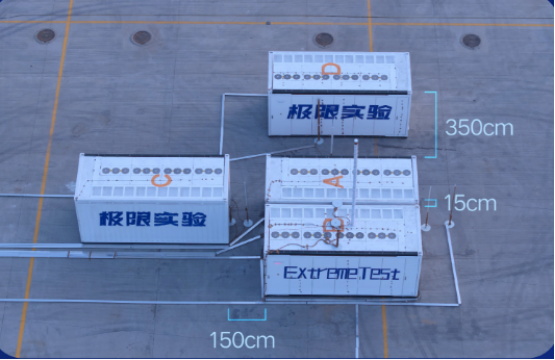LiFePO4 Battery Voltage Chart: An Essential Tool for Understanding LiFePO4 Batteries
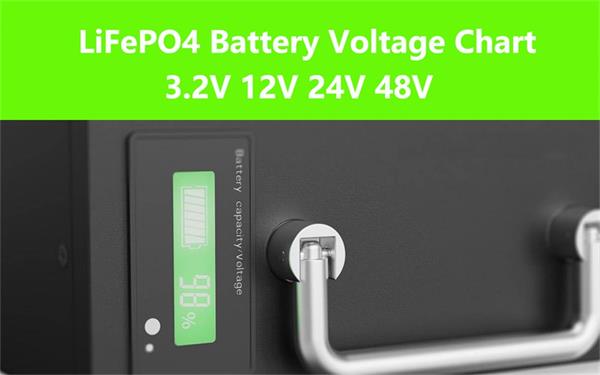
The LiFePO4 battery voltage chart is a crucial tool for helping you monitor the charge status, performance, and health of a lithium iron phosphate (LiFePO4) battery. By providing detailed data on the battery's voltage range, including voltages at full charge and discharge, it allows you to accurately assess the current state of charge (SoC) of the battery. Using a LiFePO4 battery voltage chart, you can track the battery's performance in real time, ensuring that it operates within a safe voltage range and at optimal performance, ultimately extending the battery’s lifespan and enhancing its overall efficiency.
LiFePO4 Batteries are widely used due to their safety, long lifespan, and stability, making them ideal for a variety of applications. To maximize the performance and extend the lifespan of these batteries, it is essential to understand the charging and discharging process. In this context, the LiFePO4 battery voltage chart becomes an indispensable tool.
What LiFePO4 batteries are and their voltage characteristics
Before understanding the LiFePO4 battery voltage meter, let's first look at what LiFePO4 batteries are and their voltage characteristics.
In short, LiFePO4 batteries are widely used lithium-ion rechargeable batteries that use iron as the cathode material. These batteries, known for their long lifespan, high energy density, and excellent safety features, have become the most popular choice in solar energy systems. As technology continues to advance, the popularity of LiFePO4 batteries is on the rise, making them the preferred battery type for many applications.
One of the key factors to consider when using LiFePO4 lithium batteries is their voltage characteristics. The voltage of a LiFePO4 battery refers to the potential difference between its positive and negative terminals. LiFePO4 batteries have a relatively low voltage range and stable chemical properties, making them ideal for applications that require long-term reliability and safety.
Introduction to the voltage characteristics of LiFePO4 lithium batteries
Nominal Voltage
The nominal voltage of a LiFePO4 battery is typically 3.2 volts per cell. This value represents the average working voltage under normal conditions. For example, a 12-volt LiFePO4 battery pack consists of four individual cells, each with a nominal voltage of 3.2 volts. Understanding the nominal voltage helps you choose the appropriate battery pack for your application.
Fully Charged Voltage
When a LiFePO4 battery is fully charged, its voltage typically reaches 3.6 to 3.7 volts per cell. It’s important to note that exceeding this voltage may lead to overcharging, potentially damaging the battery. A reliable charger with built-in protection mechanisms is essential to prevent overcharging and maintain the battery's lifespan.
Storage Voltage
LiFePO4 batteries have an optimal storage voltage range, typically between 3.2 to 3.3 volts per cell. Storing the battery within this voltage range ensures a longer lifespan and minimizes self-discharge. If you plan to store a LiFePO4 battery for a long period, it’s crucial to regularly check its voltage and recharge it when it falls below the recommended storage voltage.
Discharge Voltage
The minimum discharge voltage of a LiFePO4 battery is typically around 2.5 to 2.8 volts per cell. Discharging the battery below this voltage threshold may cause irreversible damage and significantly reduce its cycle life. To protect your LiFePO4 battery and extend its lifespan, it is important to use a Battery Management System (BMS) to prevent over-discharge.
Deep Discharge
Deep discharge refers to discharging a LiFePO4 battery to its lowest voltage level. While LiFePO4 batteries are more resistant to deep discharge compared to other lithium-ion batteries, they should still be avoided whenever possible. Deep discharging leads to capacity loss and negatively impacts the overall performance of the battery.
LiFePO4 Battery Voltage Chart
The LiFePO4 battery voltage chart represents the charge status of a single battery based on different voltage levels (e.g., 12V, 24V, and 48V), typically displayed as a percentage. It reveals the relationship between the state of charge (SOC) and the voltage levels. As an important resource for understanding the charging level and condition of LiFePO4 batteries, it displays the voltage spectrum from full charge to full discharge, enabling users to determine the current charge status of the battery. It serves as a convenient guide for assessing performance, promoting efficient use, and extending the lifespan of these reliable and efficient energy storage solutions.
Percentage (SOC) | 3.2V | 12V | 24V | 48V |
100% Charging | 3.65 | 14.6 | 29.2 | 58.4 |
100% Rest | 3.40 | 13.6 | 27.2 | 54.4 |
90% | 3.35 | 13.4 | 26.8 | 53.6 |
80% | 3.32 | 13.3 | 26.6 | 53.1 |
70% | 3.30 | 13.2 | 26.4 | 52.8 |
60% | 3.27 | 13.1 | 26.1 | 52.3 |
50% | 3.26 | 13.0 | 26.1 | 52.2 |
40% | 3.25 | 13.0 | 26.0 | 52.0 |
30% | 3.22 | 12.9 | 25.8 | 51.5 |
20% | 3.20 | 12.8 | 25.6 | 51.2 |
10% | 3.00 | 12.0 | 24.0 | 48.0 |
0% | 2.50 | 10.0 | 20.0 | 40.0 |
The nominal voltage of a single LiFePO4 battery is typically 3.2V. When fully charged, the voltage of these cells reaches 3.65V, while when fully discharged, the voltage drops to 2.5V.
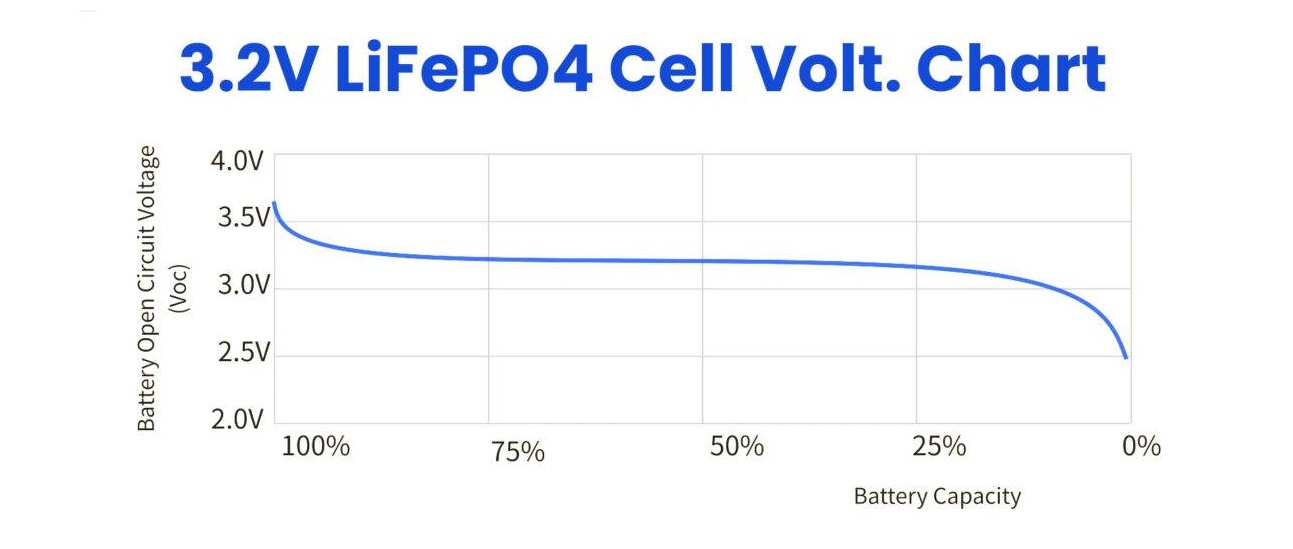
3.2V LiFePO4 Battery Voltage Chart
The 12V 100Ah LiFePO4 battery is an excellent alternative to 12V lead-acid batteries and offers enhanced safety and performance, especially in off-grid solar systems. When fully charged, the voltage of these cells reaches 14.6V, which gradually decreases as the battery discharges. After full discharge, the voltage drops to about 10V. The following 12V LiFePO4 battery voltmeter illustrates the relationship between voltage and battery capacity throughout the discharge cycle.
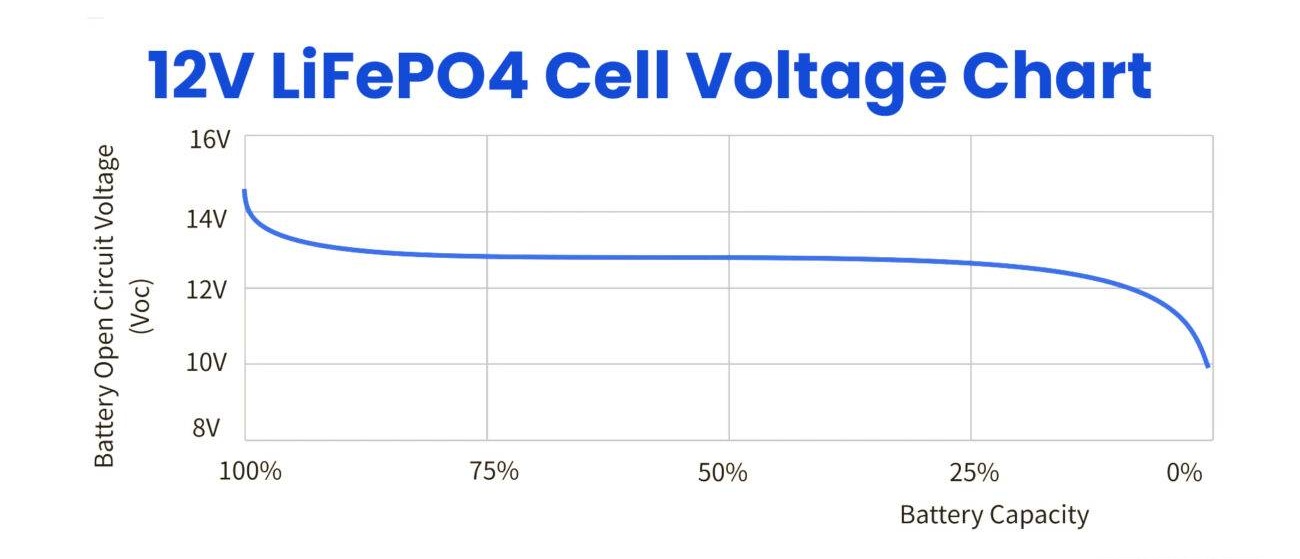
12V LiFePO4 Battery Voltage Chart
You can choose to buy 24V LiFePO4 batteries or buy two identical 12V LiFePO4 batteries and connect them in series. When fully charged, the voltage of these cells reaches 29.2V, and the voltage gradually decreases when discharged. After full discharge, the voltage drops to about 20V.
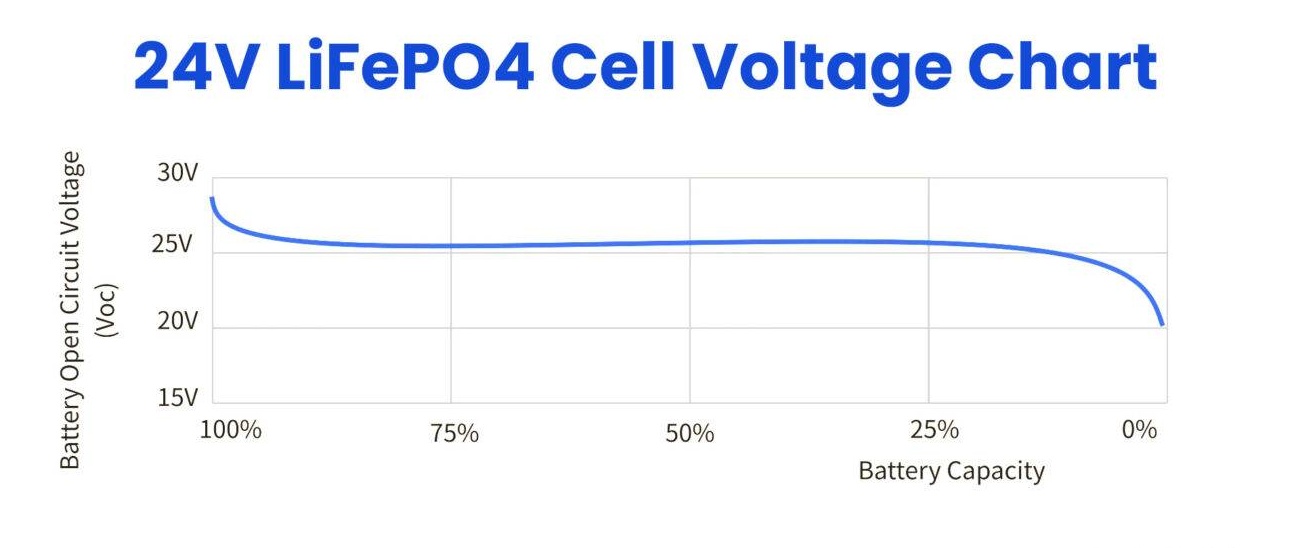
24V LiFePO4 Battery Voltage Chart
In large solar systems, 48V batteries are commonly used because they are able to handle higher voltages. These high-voltage systems effectively maintain low amperage levels, resulting in significant savings in equipment and wiring costs.
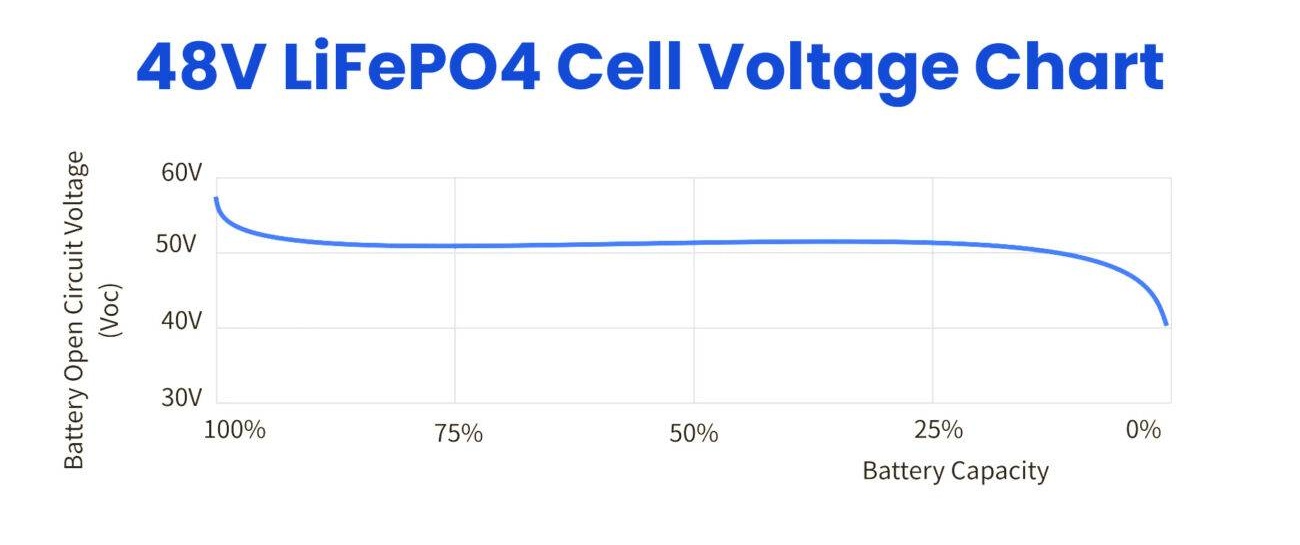
48V LiFePO4 BatteryVoltage Chart
Conclusion
The voltage diagram Outlines the voltage range for different charging states in the LiFePO4 battery pack configuration. However, it is important to refer to the manufacturer's specifications for precise voltage values and tolerances. Different voltage configurations have different voltage curves. In the actual operation process, you should refer to the operation record by
